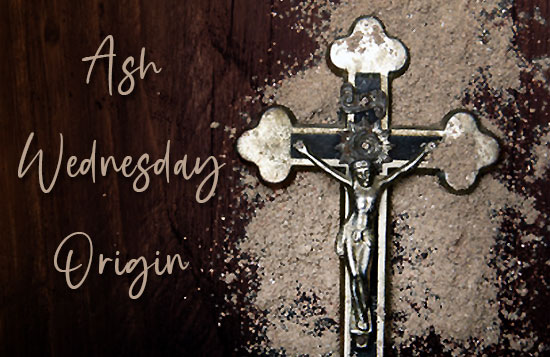
Ash Wednesday marks the onset of the Lent, the 40-day period of fasting and abstinence.
It is also known as the 'Day of Ashes'. So called because on that day at church the
faithful have their foreheads marked with ashes in the shape of a cross.
The name 'Day of Ashes' comes from "Dies Cinerum" in the Roman Missal
and is found in the earliest existing copies of the Gregorian Sacramentary.
The concept originated by the Roman Catholics somewhere in the 6th century.
Though the exact origin of the day is not clear, the custom of marking the
head with ashes on this Day is said to have originated during the papacy
of Gregory the Great (590-604).
In the Old Testament ashes were found to have used for two purposes: as a sign of humility
and mortality; and as a sign of sorrow and repentance for sin. The Christian
connotation for ashes in the liturgy of Ash Wednesday has also been taken from this Old Testament biblical custom./
Receiving ashes on the head as a reminder of mortality and a sign of sorrow for sin was a practice of the Anglo-Saxon church in the 10th century. It was made universal throughout the Western church at the Synod of Benevento in 1091.
Originally the use of ashes to betoken penance was a matter of private devotion. Later it became part of the official rite for reconciling public penitents. In this context, ashes on the penitent served as a motive for fellow Christians to pray for the returning sinner and to feel sympathy for him. Still later, the use of ashes passed into its present rite of beginning the penitential season of Lent on Ash Wednesday.
There can be no doubt that the custom of distributing the ashes to all the faithful arose from a devotional imitation of the practice observed in the case of public penitents. But this devotional usage, the reception of a sacramental which is full of the symbolism of penance (cf. the cor contritum quasi cinis of the "Dies
Irae") is of earlier date than was formerly supposed. It is mentioned as of general observance for both clerics and faithful in the Synod of
Beneventum, 1091 (Mansi, XX, 739), but nearly a hundred years earlier than this the Anglo-Saxon homilist Ælfric assumes that it applies to all classes of men.
Putting a 'cross' mark on the forehead was in imitation of the spiritual mark or seal that is put on a Christian in
baptism. This is when the newly born Christian is delivered from slavery to sin and the devil,
and made a slave of righteousness and Christ (Rom. 6:3-18).
This can also be held as an adoption of the way 'righteousness' are described in the
book of Revelation, where we come to know about the servants of God.The reference to the sealing of the servants of God for their protection in
Revelation is an allusion to a parallel passage in Ezekiel, where Ezekiel also sees a sealing of the servants of God for their protection:
"And the LORD said to him [one of the four cherubim], 'Go through the city,
through Jerusalem, and put a mark [literally, "a tav"] upon the foreheads of
the men who sigh and groan over all the abominations that are committed in
it.' And to the others he said in my hearing, 'Pass through the city after
him, and smite; your eye shall not spare, and you shall show no pity; slay
old men outright, young men and maidens, little children and women, but touch no one upon whom is the mark. And begin at my sanctuary.' So they
began with the elders who were before the house." (Ezekiel 9:4-6)
Unfortunately, like most modern translations, the one quoted above (the Revised Standard Version, which we have been quoting thus far), is not
sufficiently literal. What it actually says is to place a tav on the foreheads of the righteous
inhabitants of Jerusalem. Tav is one of the letters of the Hebrew alphabet, and in ancient script it looked like the
Greek letter chi, which happens to be two crossed lines (like an "x") and which happens to be the first letter in the word "Christ" in Greek
Christos). The Jewish rabbis commented on the connection between tav and chi and this is undoubtedly the mark Revelation has in mind when the
servants of God are sealed in it.
The early Church Fathers seized on this tav-chi-cross-christos connection and expounded it in their homilies, seeing in Ezekiel a prophetic
foreshadowing of the sealing of Christians as servants of Christ. It is also
part of the background to the Catholic practice of making the sign of the cross, which in the early centuries (as can be documented from the second
century on) was practiced by using one's thumb to furrow one's brow with a
small sign of the cross, like Catholics do today at the reading of the Gospel
during Mass.
Looking for Something? Search Google :